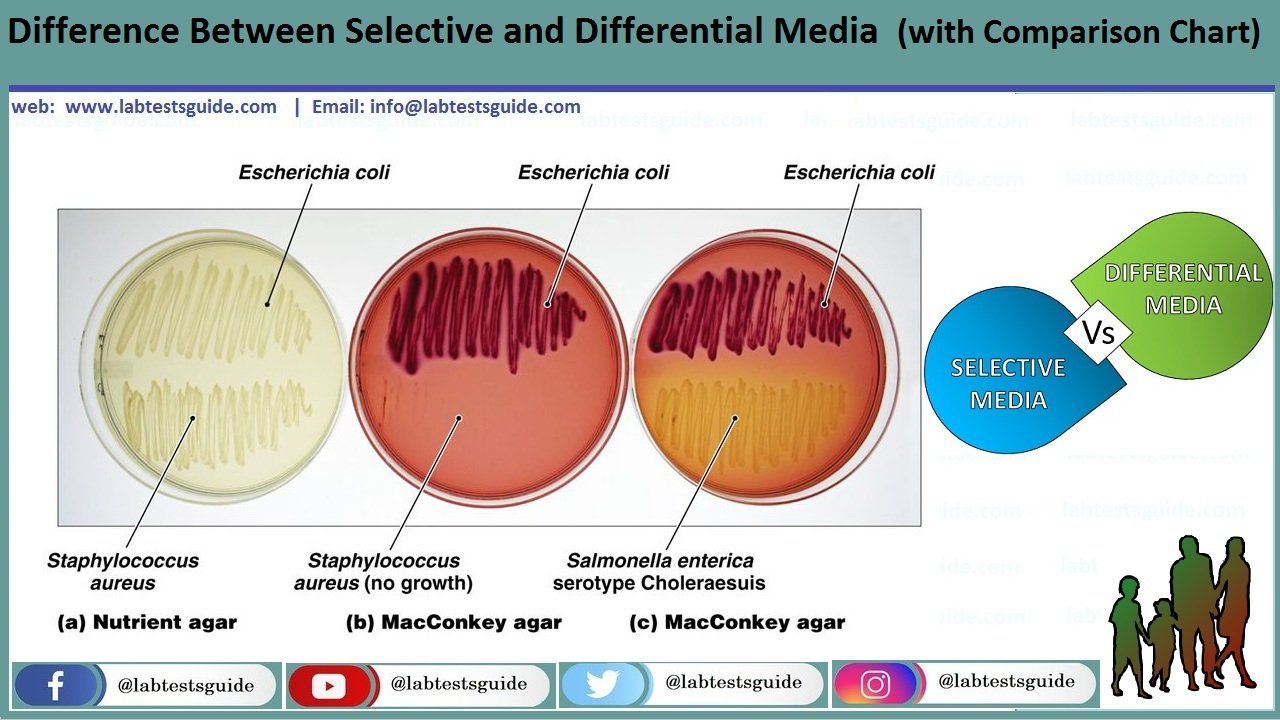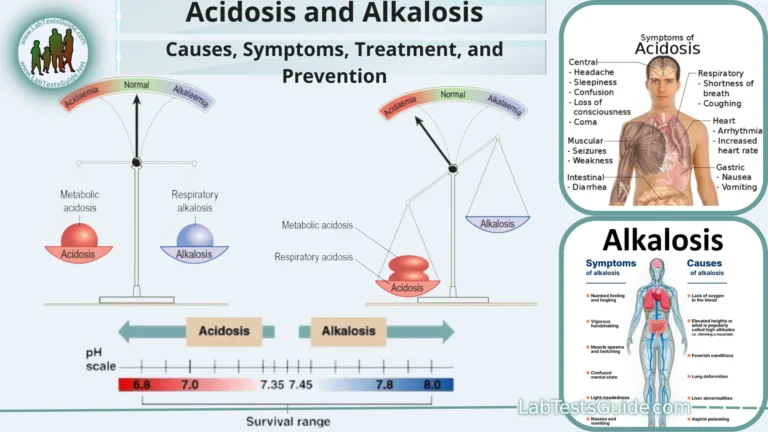The difference between selective and differential media is mainly due to the following factors:
Intended use of the media: The purpose of both selective and differential media differs. A selective media only permits the development of particular organisms, while a differential media discerns one species of the organism from the other growing on the similar substrate.

Growth pattern: Different microorganisms show different growth patterns in the selective as well as differential media, which can be characterized by the size, shape, texture, colour and other notable features.
Content: Selective Vs Differential Media
- Comparison Chart
- Definition
- Key Differences
- Conclusion
Comparison Chart
| Properties | Selective media | Differential media |
|---|---|---|
| Meaning | It selectively isolates the particular strains of the organism | It separates closely related species |
| Alternative names | Specialized media | Indicator media |
| Growth pattern | It is characterized by the growth of single organism showing different growth pattern | It is characterized by the colour change in the media as well as the bacterial colony |
| Supplements | Selective media is supplemented with certain growth promoting or inhibiting substances that can be organism or species specific | Differential media is supplemented with the indicator dyes that differentiates the bacterial isolate based on colour change |
| Examples | Mannitol salt agar, tellurite media, Lowenstein-Jensen media, thiosulphate-citrate bile sucrose agar etc. | Eosin methylene blue agar, blood agar, deoxycholate citrate agar etc. |
| Specificity | It is more specific as it permits the growth of single microorganism | It is less specific, as closely related species may also develop |
Definition
Selective media: It can define as the agar-based medium that favours the growth of specific organism by restricting the development of other undesired bacteria. Selective media is supplemented with antibiotic sensitive to the target organism resistant for the growth of other organisms. It suppresses undesired commensals and contaminants. When the same approach is applied for the liquid medium, it refers as enrichment broth.
The media can be made selective if it is rendered with some inhibitory substances that in turn will restrict the other of undesired organisms. The selectivity of the medium depends on the addition of antibiotic agent, chemicals, indicator dyes and media with altered pH.
Examples
Example of selective media added with antibiotic:
Charcoal blood agar media contain cephalexin that selectively isolates Bordetella pertussis. Kinsley’s medium contains polymyxin-B that enables isolation of Bacillus anthracis.
Example of selective media added with chemicals:
Mannitol salt agar medium contains 10% sodium chloride that helps in the isolation of Staphylococcus aureus. MacConkey agar media contains bile salt and less selective for the isolation of different members belonging to the Enterobacteriacea family. Potassium tellurite media comprises 0.04% of potassium tellurite that is selective for the growth of Clostridium diphtheria.
Example of selective media supplemented with dyes:
Crystal violet agar medium comprises 0.0002% CV that helps in the isolation of Streptococcus pyogenes. Lowenstein Jensen agar media comprises malachite green that is selective for the isolation of Mycobacterium tuberculosis.
Examples of media with altered pH:
Thiosulfate citrate bile salt sucrose agar media has an altered pH of 8.6 for the growth of vibrio cholera. Monsur’s tellurite taurocholate gelatin agar has an altered pH of 8.5 for the growth of V. cholera.
Differential media: It can define as the agar-based media that can discriminates one type of microorganism from the others growing in the same medium. The differentiation of the microorganisms depends upon their biochemical reaction with the indicators like neutral red, phenol red, methylene blue etc.
The differential media also detects the closely related organisms and the recombinant bacterial strains. It is incorporated with dyes, metabolic substrates etc. which is exploited by bacteria. The difference is based on the tendency of the bacteria to carry out specific biochemical processes. The growth pattern can be visualized by the hemolytic reactions, fermentation of specific sugar etc.
Examples
Lead acetate agar differentiates paratyphoid strains by the formation of lead sulphide. Eosine methylene blue agar helps in discriminating the colon typhoid organisms from pathogenic material. Endo’s agar medium facilitates differentiation of colon colonies particularly from water suspected of pollution.
Key Differences Between Selective and Differential Media
- Selective media selectively isolate the particular strains of the organism, while differential medium discriminates between the familiar species.
- The growth on selective media is characterized by the growth of single organism showing different growth pattern. In contrast, the growth on differential media is characterized by the colour change in the media as well as the bacterial colony.
- Selective media is incorporated with certain growth promoting or inhibiting substances that can be organism or species specific. Oppositely, the differential media is mainly incorporated with indicator dyes that differentiates the bacterial isolate based on colour change.
Conclusion
Despite of many differences, both selective and differential media are commonly used in the medical field, to check water pollution, in food and dairy labs etc
Types of Culture Media :
There are some types of important culture or growth media used in microbiological laboratories:
- The Preservation Culture Media
- The Enrichment Culture Media
- Selective Culture Media
- Differential Culture Media
- Resuscitation Culture Media
- General Purpose Media
Possible References Used





